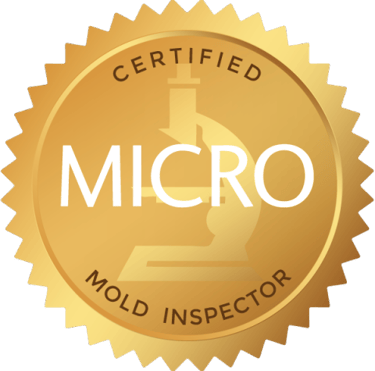5 Key Air Quality Metrics Every Building Manager Should Track
BUSINESSES AND SCHOOLS
8/28/20244 min read


Understanding the Importance of CO2 Levels
Monitoring carbon dioxide (CO2) levels is fundamental for maintaining optimal indoor air quality. Elevated CO2 levels can significantly impact the health and productivity of building occupants. Research has shown that high CO2 concentrations can lead to decreased cognitive function, resulting in diminished decision-making abilities, lower concentration levels, and overall discomfort. CO2 levels are, therefore, a crucial indoor air quality metric for ensuring a healthy and productive indoor environment.
Optimal CO2 ranges for indoor environments typically lie between 400 and 1,000 parts per million (ppm). Levels above this range can be considered problematic. For instance, concentrations between 1,000 and 2,000 ppm can cause drowsiness and headaches, while levels greater than 2,000 ppm can significantly impair cognitive function and overall well-being. It’s essential for building managers to keep CO2 concentrations within the recommended range to ensure occupant comfort and health.
Indoor CO2 sources primarily include human respiration and combustion processes from heating systems, machinery, or appliances without adequate ventilation. Office equipment, such as computers and printers, can also contribute to elevated CO2 levels. Strategies for managing and reducing CO2 concentrations in business environments are crucial. These strategies can include increasing ventilation rates, incorporating plants that absorb CO2, and utilizing air purification systems equipped with CO2 sensors. Additionally, periodic monitoring of CO2 levels through advanced air quality sensors can help building managers take proactive measures in maintaining optimal air quality.
The health implications of prolonged exposure to elevated CO2 levels should not be underestimated. Long-term exposure can exacerbate respiratory issues and compromise overall indoor air quality. Therefore, continuous CO2 monitoring and employing strategies to mitigate high levels are essential for creating healthier indoor environments, ultimately leading to reduced absenteeism and improved productivity among occupants.
The Impact of PM2.5 on Health and Comfort
Particulate matter, particularly those particles smaller than 2.5 micrometers in diameter (PM2.5), is a critical air quality metric that building managers should diligently monitor. PM2.5 originates from various sources, including combustion processes, industrial activities, and vehicular emissions. Due to their minuscule size, PM2.5 particles easily infiltrate indoor environments, posing significant health and comfort challenges.
Exposure to elevated levels of PM2.5 can lead to a myriad of adverse health effects. Respiratory issues such as asthma and bronchitis are commonly exacerbated by these fine particles. Furthermore, prolonged exposure to PM2.5 is associated with serious cardiovascular problems, including heart attacks and strokes. Vulnerable populations, such as children, the elderly, and individuals with preexisting respiratory conditions, face a higher risk of health complications when exposed to high PM2.5 levels.
Standard measurement techniques for PM2.5 involve the use of air quality monitors equipped with filters and gravimetric analysis. More advanced monitoring systems use laser scattering methods to provide real-time data on particle concentration. Building managers should familiarize themselves with these measurement techniques to accurately assess indoor PM2.5 levels.
The World Health Organization (WHO) guidelines suggest that PM2.5 concentrations should not exceed an annual mean of 10 µg/m³ and a 24-hour mean of 25 µg/m³. Following these guidelines helps ensure that indoor air quality remains within acceptable limits, thereby safeguarding occupants' health and comfort.
To mitigate PM2.5 levels within buildings, managers can implement several measures. Enhancing ventilation systems by incorporating high-efficiency particulate air (HEPA) filters can significantly reduce indoor PM2.5 concentrations. Regular maintenance of heating, ventilation, and air conditioning (HVAC) systems is crucial for optimal performance and pollutant control. Additionally, encouraging the use of less polluting transportation options and minimizing indoor activities that generate particulate matter, such as smoking or using certain cleaning agents, further contributes to improved air quality.
By understanding the impact of PM2.5 and implementing effective mitigation strategies, building managers can create healthier and more comfortable indoor environments for all occupants.
Monitoring VOCs, Humidity, and Radon for a Healthier Indoor Environment
Maintaining a healthy indoor environment is crucial for the well-being of building occupants. Among the essential air quality metrics that every building manager should monitor are Volatile Organic Compounds (VOCs), humidity, and radon. Each of these elements plays a significant role in the overall air quality and, consequently, the health of those within the space.
Volatile Organic Compounds (VOCs) are a group of chemicals that readily evaporate at room temperature. Common sources of VOCs include building materials such as paints and varnishes, cleaning agents, and even furnishings. Exposure to VOCs can lead to a variety of health issues ranging from short-term effects like headaches and dizziness to long-term impacts such as liver, kidney, and central nervous system damage. Proper ventilation, using low-VOC products, and regular air quality testing are effective strategies for reducing VOC concentrations indoors.
Humidity control is another critical factor in maintaining a healthy indoor atmosphere. Ideally, indoor humidity levels should be maintained between 30% and 50%. High humidity can promote mold growth, which not only damages building materials but also poses significant health risks, including respiratory issues and allergic reactions. Conversely, extremely low humidity levels can cause dry skin, respiratory irritation, and an increased risk of colds and flu. Building managers can utilize humidifiers and dehumidifiers, as well as ensure proper HVAC system maintenance, to maintain optimal humidity levels.
Radon, a naturally occurring radioactive gas, is another critical air quality metric. It originates from the natural decay of uranium found in soil and can seep into buildings through cracks and other openings in the foundation. Radon exposure is the second leading cause of lung cancer after smoking, making it a significant concern for indoor environments. Testing for radon levels and implementing mitigation measures, like improved ventilation and sealing entry points, can drastically reduce the health risks associated with radon.
By proactively monitoring and managing VOCs, humidity, and radon levels, building managers can significantly enhance the indoor air quality and promote a healthier living and working environment.
TUNE MY SPACE LLC
Afton , Virginia 22920
support@tunemyspace.com




